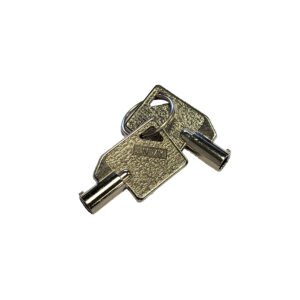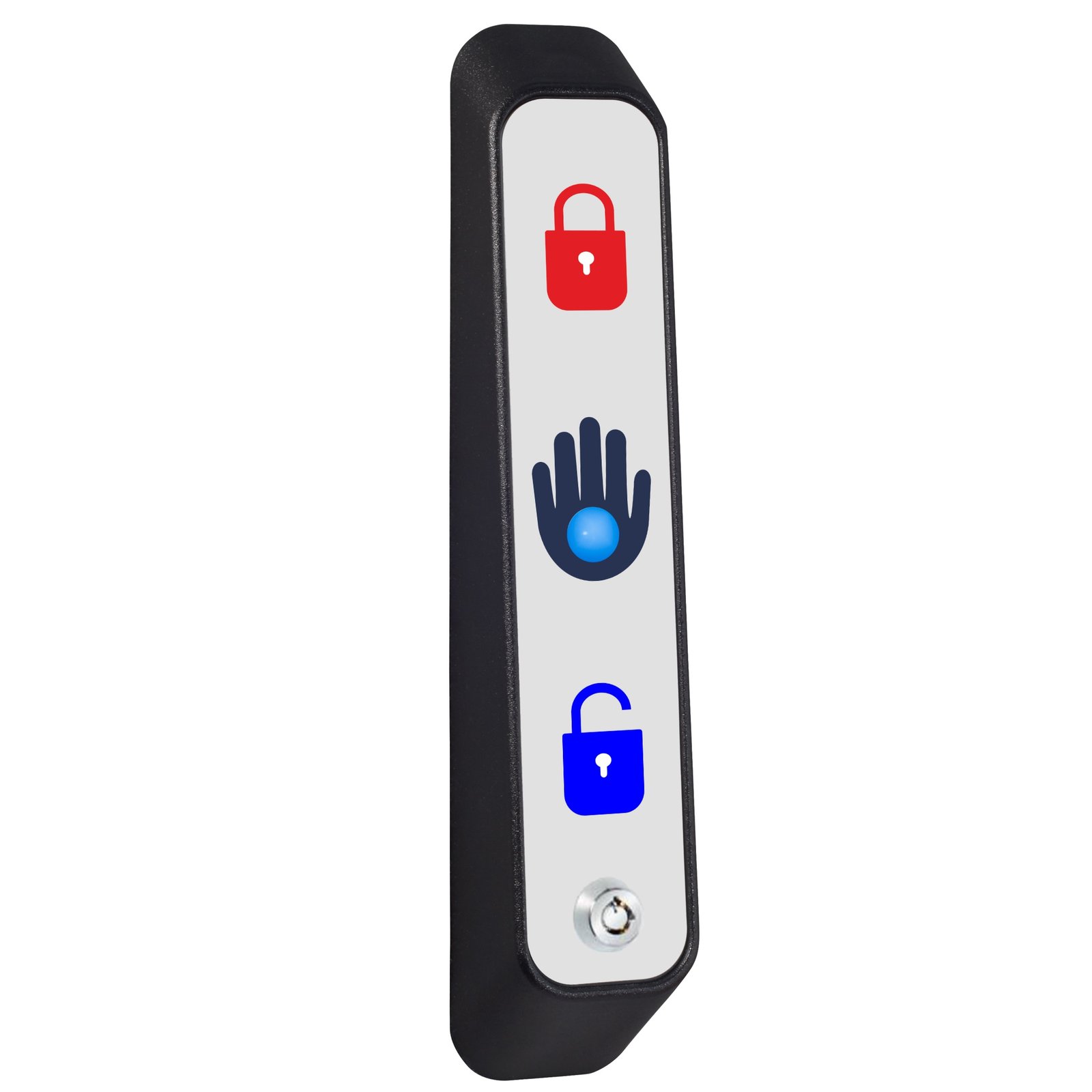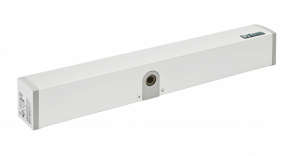Architrave Toilet Door Indicator Touch Sensor AWCEURO
Toilet Door Indicator Touch Sensor
Architrave touch to lock/unlock toilet door sensor with LED indicator. The padlock symbols used on the signage is to signify the lock status.
Our disabled toilet locking systems are the system of choice due to its simple, easy to use, reliable and adaptable design. As used in the House of Commons, House of Lords, Heathrow and Gatwick airports, plus many more!
The switches are great for people who struggle with dexterity, because no physical press is needed. The red and blue status indicators have also been chosen to aid people with visual impairments. The entire label is protected by SteriTouch® which means 99.9% of germs are destroyed, making them a very clean switch!
Features –
- The units are powered by 12-24Vdc.
- Switching red & blue LEDs to show engaged or vacant status
- Key switch on all external sensors for emergency entry
- Anti-prank contact to prevent misuse
- Timed clean output for auto door activation
How does it work?
When the door is unlocked you can enter manually or operate the external sensor for assisted entry.
- Once inside the cubicle, activate the internal sensor which will lock the door.
- When you are ready to exit, activate the internal sensor again to unlock the door with assisted exit.






BEST PRICE
Prices that are hard to beat!
TRADE ENQUIRIES
Set up an online account or contact us for the current trade prices
GUARANTEED
Next-Day Delivery*
Reviews
You Might Also Like
-

Contactless Toilet Door Kit WCKIT-HAND
Contactless Toilet Door Kit Our touch free disabled persons toilet door opener kit, includes sensors, control...
£352.63Excluding Sales Tax | ShippingBUY NOW -

Radar Key Entry Disabled Persons Toilet Door Switch
Radar Key Entry Architrave/Jamb Switch sku: AWCRADAR H...
£328.87Excluding Sales Tax | ShippingBUY NOW -

Door Finger Guard Protection FSR5000 & FSR6000
Door Finger Guard Protection Finger guards help to improve door...
£92.20Excluding Sales Tax | ShippingBUY NOW -

Emergency Door Access Override Keys – WCKEY 102
WCKEY Emergency Door Access Override Keys Spare Emergency Override Keys for our external WC sensors...
£4.41Excluding Sales Tax | ShippingBUY NOW









